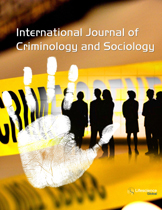ijcs
Abstract : Prosecutorial Discretion and the Death Penalty: An Integral Perspective
|
|
Abstract: The prosecutor’s choice to pursue the death penalty is one of the most momentous decisions he or she will face. Capital punishment represents the ultimate power of the state over its citizenry, and the decision to take the life of an offender is fraught with moral complexity. This paper reviews some of the extant literature on the US death penalty in general and the particular issue of decision-making for prosecutors. Further, we introduce discussion on how Wilber’s Integral theory might be applied to the topic. We present aspects of Integral theory, including the four quadrant model and what Wilber refers to as the Basic Moral Intuition (BMI), as possible tools that may be used to navigate the ethical difficulties surrounding this decision-making process. We anticipate that delving into aspects of the Integral theory and contemplating on how they relate to concrete issues of criminal prosecution may assist CJ practitioners in how they might find pathways to resolutions of ethical quandaries. Keywords: Prosecutors, ethics, Integral theory, death penalty, capital punishment.Download Full Article |
Abstract : Youth Justice and Education: A Typology of Educational Approaches to the Resocialisation of Young Offenders in Spain
|
|
Abstract: The Young Offenders Act that entered Spanish law in 2000 represents a significant attempt to place personalised educational programmes for young people with social/criminal problems at the centre of policy and practice. This paper examines the teams and educational programmes designed to manage and implement the goal of ‘re-socialisation’ enshrined in the Act. This paper focuses on an analytical typology of the educational styles used at young offenders institutions in Spain. The analysis highlights the differences between styles in relation to the key underlying objectives of social reorientation and citizen empowerment. The wide range of models experimented with in different Spanish regions has great relevance to youth justice systems in other countries. For example, the typology we put forward has concrete implications for recent developments in England, in the light of moves towards establishing a national network of “Secure Colleges” for convicted young people. Keywords: Young offenders, education, rehabilitation, juvenile delinquency, secure colleges.Download Full Article |
Abstract : Predictors of Release from Guantánamo Bay and Detainee Recidivism
|
|
Abstract: Exploring Reports of Recidivism by Guantánamo Bay Releasees. The purpose of this research is to examine what is known about recidivism by Guantánamo Bay releasees. Government reports suggest that approximately 27 percent of these releasees have returned to the battlefield while reporting in the open source media identifies the recidivism rate as nearly 9 percent. Deterrence, labeling and defiance theories were applied to explain their recidivism, and The New York Times’ Guantánamo Docket document release was used to code the 779 detainees on whether they were released, their nationality, age, time since release, risk level, intelligence value and other relevant domains. The recidivism data were obtained from the New America Foundation. These datasets were used to model the predictors of release from Guantánamo Bay and the predictors of recidivism for those who were released. Risk level, intelligence value, membership in multiple groups, and being of Yemeni nationality all statistically significantly affected the likelihood of release. However, only time since release predicted recidivism. It is likely that the proportion of detainees identified as recidivists will increase over time, as time to offend and be discovered increases, and as higher-risk detainees are released as part of the Obama Administration’s attempts to empty the island prison. Keywords: Recidivism, terrorism, Guantánamo Bay.Download Full Article |
Abstract : Constructing the Military Hero
|
|
Abstract: Today we see an increase in the usage of the term hero. Especially in the media, the term is applied not only to those who do specific heroic deeds but to entire professions, e.g., the military. In this paper, we analyze the media’s social construction of military heroes with respect to four individuals, two fictional characters and two real people. We argue that four themes are essential to the construction of the military hero whether for fictional or real people: a biography; strength of purpose; gender; and the reinforcement of national values. Once constructed in the media, the hero often contributes to political ends by reinforcing national values. More specifically, in their construction military heroes reflect and reproduce ideologies that legitimate the state and its military aggressiveness. Keywords: Hero, militarism, social construction, myth.Download Full Article |






























